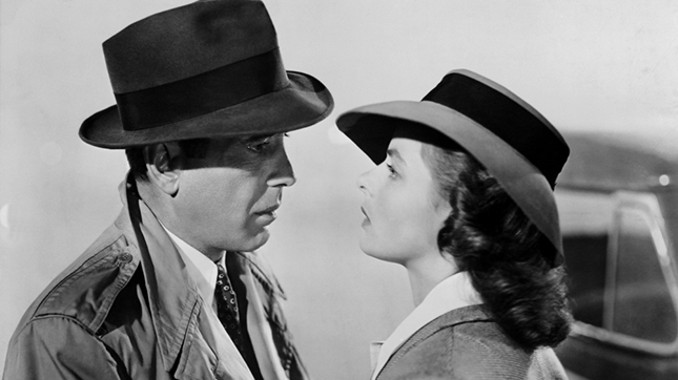
by Vi Burgess, editor-in-chief
Since school ended, I’ve been (rather unfortunately) sitting by my computer binge-watching old 90’s rom-coms until I’ve found something better to do. But after a while, the two tropes of hate-each-other-then-suddenly-fall-in-love and fall-in-love-but-wait-someone-dies get a just a bit too old; I mean, there are only so many versions of the perfect, romantic love stories that anyone can stand. But with the 1942 black-and-white classic Casablanca, the plot was refreshingly different in that its less-than-perfect love story wasn’t always the focus.
In the most desperate part of World War II, American Rick Blaine (Humphrey Bogart) is running a saloon in Casablanca, Morocco, carefully remaining neutral despite the influx of Resistance fighters, German soldiers, and the extraordinarily corrupt locals. When a shady businessman gives Blaine letters of transit (that would ensure safe passage to Lisbon, and thereby to America) for safekeeping shortly before his arrest and murder, Blaine is thrust into the middle of intrigue that he has no wish to be part of, as seemingly half of the town is after the letters.
Among those seeking the papers is the Resistance hero and concentration camp escapee Victor Laszlo and his wife, Ilsa Lund (Paul Henried and Ingrid Bergman). To complicate matters further, before the story takes place, Lund and Blaine were in love while Laszlo was presumed dead at the hands of the Nazis in Czechoslovakia; however, Lund leaves Blaine without explanation once informed that Laszlo is alive. When Laszlo and Lund walk into Blaine’s saloon, he’s still bitter from her seeming-coldheartedness. Without spoiling too much of the plot, Blaine has to choose between pursuing his love for Lund by using the letters of transit with her and allowing Laszlo and Lund to escape and continue fighting against the Nazis, leaving Blaine heartbroken in Casablanca.
Though different from modern romantic movies, the film contains some of the most iconic lines in film history. From the simplicity of the declarations of love (‘Here’s looking at you, kid”) to the classic barbed wit (“What is your nationality?” “I’m a drunkard”), these lines have persisted for seventy-odd years. The film isn’t carried just by the main actors, either–all of the supporting cast actually added value to the film’s plot, from the pianoman to the waiter (who, incidentally, looks like Mitch McConnell). However, the sweetest part is that the vast majority of the extras were European refugees from the Nazis, adding more meaning to the film than the average war story, especially during the scene featuring a loud chorus of the French national anthem.
Perhaps the best part of Casablanca was the mere fact that it’s a story of heartbreak and sacrifice, not one of falling in love and winning the fairytale ending. In nearly every frame that Bogart and Bergman appear together, his heartbreak and her guilt are written all over their faces, yet it doesn’t hit you over the head with the point as Nicholas Sparks movies are apt to do. In part because the film has a relatively slow start, it feels less overtly about sappy romance as it does about the reality of love–that it inspires hard choices. Casablanca considers the circumstances of WWII and gives them due weight in the story, acknowledging and indulging viewers who want to see more than just doe eyes (in this case, that’s a murder or two, a healthy amount of gambling and bribery, and some good old-fashioned corruption). It’s smart in the way that it treats love, giving it just a touch of fairytale and heaps of reality, making it the best love story I’ve seen in a long time.

